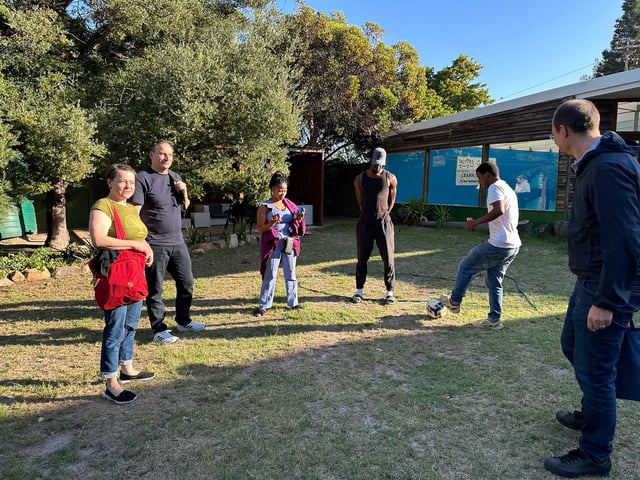At Henley Business School, we’ve been committed to the importance of a reflective view in management development for years. As part of personal development, we create spaces for participants to “stop and think” as they progress through their programme.
We’ve reached a few conclusions about reflection over time, and I would like to share six ways, in no particular order, that you can start to explore reflective practice for yourself:
1. Whenever it makes sense to do so, saunter
Most managers live in a world pressuring them for speed, for instant solutions to problems (solutions that often just lead to more problems, which need further instant solutions, and so on). They also find that they appear to have a lot of information available right at their finger-tips, 24/7, and that they are expected to know everything – but the pace of change prevents this, so they are constantly on the back foot. This is microwave management, where you quickly read the instructions (what does the boss want?) and chuck the problem into the machine on a high setting. Not every kind of business issue or management problem is like that, though. Sometimes you need a slow-cooker approach, and allow things to stew.
Simmering in cooking is a bit like sauntering in walking. Sauntering is taking a walk in a more relaxed, meandering way; it’s not just a question of going slowly. Sauntering is both a metaphor for mental activity AND a literal activity, and you should try both. Stuck? Fed up? No time? Go for a ramble (without your phone). When you saunter, you might or might not have somewhere in mind to go, you might or might not use your time to think about the problem, and you might or might not choose to be open to changing your plans along the way. At that pace, you can tune into the reality of the world around you, which is actually what a strategic manager is supposed to be doing.
2. Write things down
Preferably by hand, preferably in a notebook that you carry with you. Or on sticky notes. Or on a screen if that’s your way. But when you are in a reflective place, ideas and thoughts will strike you from directions you did not expect. If you fail to write them down, they will fade and pass. Notes made in meetings don’t have to be notes OF the meeting, they can be notes IN the meeting. Keeping a diary, or a journal, or a blog or just about any device to record a thought or develop an idea is a form of thought-processing. What’s more, ideas shared become ideas gained, not lost.
3. Don’t be busy, be present
You only live once – the saying goes – but if you do it right, once is enough. Most of us, whether through improved health care, absence of primeval dangers or just good fortune, are living much longer lives than our ancestors but, particularly in our middle years, we remain so focused on activities entirely dictated by memory of past or anticipation of future that we miss the fact that living only happens in the present.
We limit our choices when we put things off, or when we believe we are only here because of our past. Worse, we have adopted an absurd definition of the present as the knife-edge, wafer-thin division between a fixed past and a weighty (wait-y?) future. This before-and-after definition of the present is an illusion. Nor should we define “now” as a temporary moment which, if we really, really focused, we could actually experience; like a pin-prick. There’s a much bigger possibility here, and it may be the real clue to what the reflective practitioner does. Take the concept of the present as being elastic and stretch it out (forwards as well as backwards) to include your experience of the past and your plan for the future as being aspects just as in the present as what you currently think “now” is. Do this, and the straitjacket boundaries of cause and effect may start to blur. When that happens, you can finally wake up to the presence of the people around. The push-me-pull-you façade of “busyness” endemic to the modern career drops away.
4. Be curious, rigorous and tenacious
Reflective practice is about doing things in such a way that you increase your effectiveness in the present (which, now, encompasses everything). It appears to others as though nothing seems to throw you off your feet. What is happening to you, around you, or as a result of your own expectations (remember, disappointment takes planning) is just what’s happening and more grist to the mill for your ability to act both spontaneously and purposively – a neat trick. I think there are three aspects of this:
Curiosity: our natural desire to want to know, to be interested in, and to seek to explain;
Rigour: a careful and meticulous approach to knowing how things are (though this presupposes that we first know how we know);
Tenacity: not letting go, keeping going, not giving up. With curiosity and an open-mind, this can switch from what looks like stubbornness to the “yes, and…” spirit of improve and jazz musicians rely on. Nothing is an error, keep on.
5. Forget perfectionism
It’s fascinating how many Executive MBA students bring their perfectionism almost as a badge of pride onto the course. Yet you can’t win with perfectionism – that’s sort of its meaning. Drop it. You’re looking exactly in the wrong place for completeness if you’re a perfectionist. The problem is that a lot of very clever and accomplished managers firmly believe that the polar opposite of perfectionism is slovenliness, or second-rate slobbishness. The alternative to perfectionism, however, is awareness.
6. Assume that you’re making assumptions
Before becoming a reflective practitioner, most managers are pretty confident in their knowledge. Managers often feel they need to be in control in order to build or maintain their credibility – “I need to look like I know what I’m talking about.” This can allow all sorts of thinking biases to creep in. Reflective practice is the process of suspending judgement, feeling comfortable standing in a space labelled “I don’t know” and actively seeking out their own and others’ assumptions to work out why they’re stuck. “What must be so in order for me to hold this position?” Keep digging. Whatever you’re thinking right now is built on other foundations and frankly it’s unlikely that you’ll ever reach complete bed-rock as there are many layers of assumptions that have built up (culturally and socially) over millennia. We are often conscious of only one or two such layers in our relationship to reality.
One of the side-effects of doing this is that you stop and listen. When you do that, you have a much better chance of noticing. When you do that, you have options.








